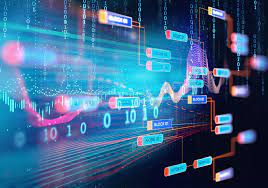In an increasingly data-driven world, data science has taken center stage. It’s a field that combines mathematics, programming, and domain expertise to derive insights from massive volumes of data, ultimately influencing decision-making processes across industries. Yet, for many, data science remains an enigma, seemingly shrouded in complexity and obscurity. In this article, we aim to demystify the realm of data science by providing a comprehensive guide that breaks down the fundamental concepts, tools, and techniques that constitute this intriguing discipline.
Understanding Data Science
First and foremost, it’s crucial to understand that data science is not merely about crunching numbers and running algorithms. It’s a multidisciplinary approach to solving real-world problems using data as the primary resource. This guide seeks to unravel the core components of data science:
- Data Collection and Cleaning: Any data science endeavor begins with collecting data. It could be structured data from databases, unstructured data from text documents, or data from sensors and IoT devices. However, raw data often comes with imperfections and inconsistencies. Data scientists employ data cleaning techniques to ensure that data is in a usable state for analysis.
- Exploratory Data Analysis (EDA): EDA is a critical step in understanding the data’s structure, identifying patterns, and uncovering potential insights. Data visualization, statistical summaries, and exploratory techniques help data scientists gain a deeper grasp of the data before delving into modeling.
- Machine Learning and Statistical Analysis: Once you have a clear understanding of your data, you can apply machine learning algorithms and statistical methods to make predictions, identify correlations, and extract valuable knowledge. Machine learning models are trained on historical data to make predictions on new data, which can inform decision-making processes.
- Data Visualization: Visualizing data is essential to communicate findings effectively. Data scientists use charts, graphs, and interactive dashboards to convey complex insights in a comprehensible manner. Visualization plays a vital role in making data-driven decisions accessible to non-technical stakeholders.
- Model Deployment: Data science doesn’t stop at building models; it extends to deploying them in real-world applications. This may involve integrating predictive models into websites, apps, or business processes to automate decision-making. Data scientists must ensure that the models are maintained and continually improved as new data becomes available.
Tools of the Trade
To demystify data science, one must become acquainted with the tools and technologies data scientists rely on daily. The most commonly used programming languages for data science are Python and R. These languages provide extensive libraries and frameworks that facilitate data manipulation, analysis, and machine learning. Jupyter notebooks are widely used for creating and sharing documents that contain live code, equations, visualizations, and narrative text.
Moreover, data science involves various libraries and frameworks such as scikit-learn for machine learning in Python, TensorFlow and PyTorch for deep learning, and NumPy and Pandas for data manipulation and analysis.
Practical Examples and Case Studies
Understanding the theory of data science is one thing, but seeing it in action is another. Practical examples and case studies help to bridge the gap between theory and application. Data science is not limited to a single domain; it has a wide range of applications across industries. Healthcare, for instance, employs data science for predictive modeling of disease outbreaks and patient outcomes. In finance, data science aids in fraud detection and portfolio optimization. E-commerce relies on recommendation systems, and marketing leverages customer segmentation and sentiment analysis.
These real-world applications demonstrate the tangible impact data science can have on businesses and society, underscoring its relevance and ubiquity in today’s data-centric world.
Continuous Learning and Resources
Data science is a rapidly evolving field, with new techniques, tools, and technologies constantly emerging. To stay ahead, aspiring data scientists and professionals must commit to continuous learning. Online courses, MOOCs (Massive Open Online Courses), and educational platforms like Coursera, edX, and Udacity offer a plethora of data science courses. These courses cover everything from the basics to advanced topics like deep learning and natural language processing.
Furthermore, online communities, forums, and social media platforms provide spaces for networking and knowledge sharing. Data science enthusiasts often exchange ideas, discuss challenges, and share insights on platforms like Kaggle and GitHub.
Conclusion
In conclusion, data science has risen to prominence in an increasingly data-driven world. It serves as the bridge between raw information and valuable insights, leveraging mathematics, programming, and domain expertise. However, this field often appears as a complex and enigmatic domain for many. The purpose of this article was to demystify data science by offering a comprehensive guide that dissects its fundamental components, tools, and techniques.
To embark on your data science journey and enroll in a Data Science Institute in Nagpur, Indore, Gwalior, Noida, Delhi, or other cities in India, seize the opportunity to unlock the world of data-driven decision-making. Empower yourself with the skills and insights necessary to navigate the data-centric landscape and make a meaningful impact in your chosen field. Your journey into the realm of data science begins with enrollment in a respected institute, opening doors to a world of endless possibilities.


